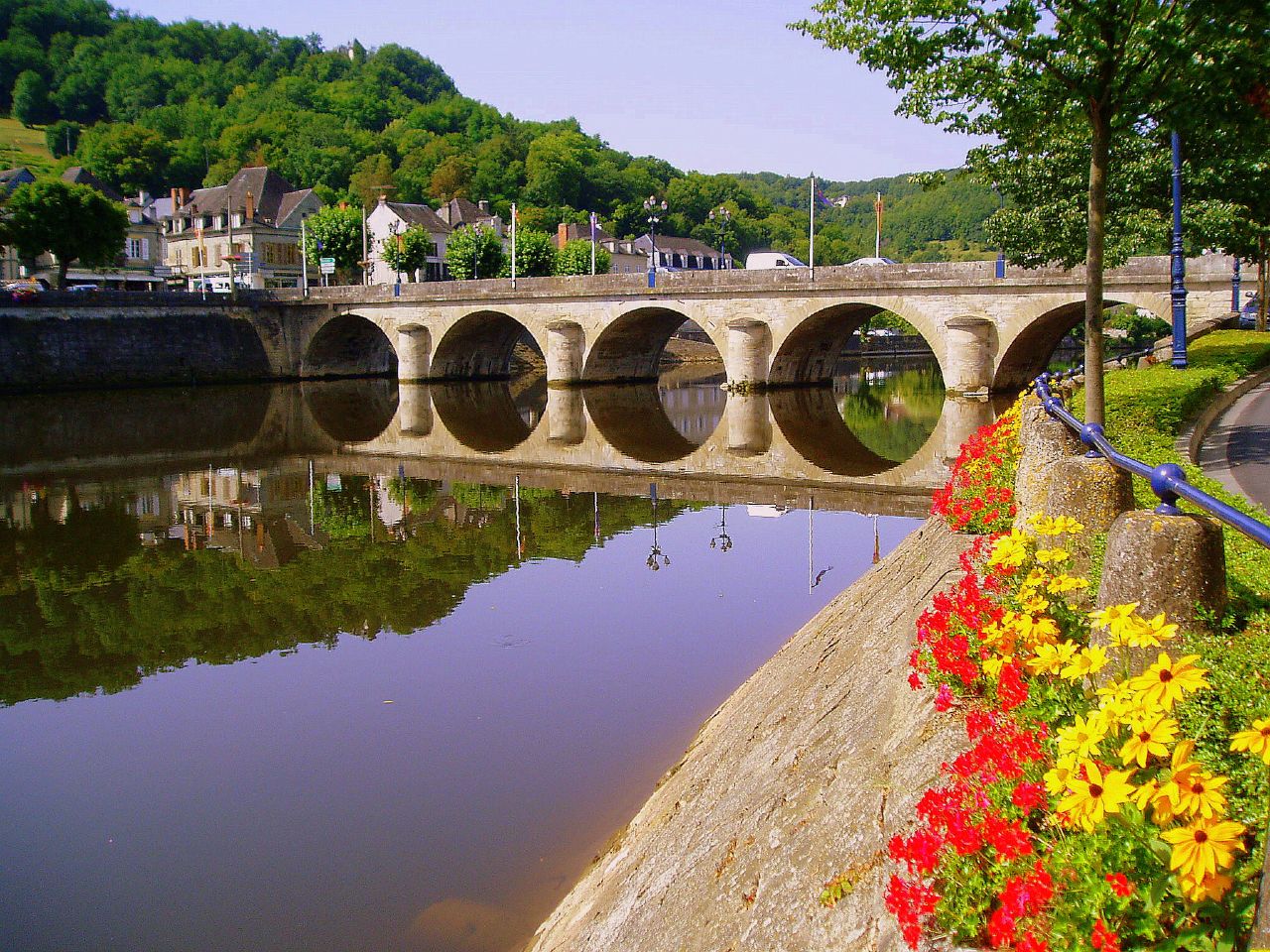
France - Image credit by Fr Antunes
France is perhaps one of the most fantastic gems of the lovely planet, as it attracts the largest number of tourists ever year towards it. France is spread over a piece of land of approximately 551,000 square km which is almost one fifth of the Europe’s total area. In addition to this, the country holds 15 more territories all around the globe in its possession. It has almost 66 million inhabitants who live mostly in urban parts of the country. The people of France speak French language and generally behave like ultimate patriots. F. Scott Fitzgerald wrote in ‘Tender is the night’; “I like France, where everybody thinks he’s Napoleon–down here everybody thinks he’s Christ.”
Religiously majority of French are Roman Catholic while minorities Muslim, Protestant, Jewish and a little portion who are not affiliated to any religion. French law is still based on the principles set down in Napoleon Bonaparte’s Code Civil back in the 1800s. France has remained the second largest colonial empire in the past so it has tremendous influences over many regions of the world. Paris is the country’s capital which is the ideal destination for the visitors around the globe. The city is known as “City of lights” having more than 296 gorgeous sites including hotels, clubs, churches, national places and other structures, etc. The most popular sports in France are football, rugby, tennis and cycling while older people still enjoy the traditional game of pétanque or boules (a game played with heavy metal balls) in the town square.
The global leader in world tourism industry has abundance of features to offer its visitors. Its attractions are ranging from its diverse geography to its modern infrastructures and facilities along with its resplendent history and awe-inspiring heritage. People love to go to French cultural spots and cherish to participate in its numerous festive events. France has more than four thousands museums and display centers to showcase its rich and sparkling past. France has more than 38,000 historic monuments and almost 1500 private châteaux are open to the public. France is world leader in literature and performing arts events. There are countless cinemas in the country with 50, 000 theatrical productions every year. These some possibly above stated characteristics along with thousands of other aspects make France the most desired destination in the lovely planet.
See also: 7 Famous Natural Wonders of France
In this article, we’ve made a list of 30 best and the most popular tourist places in France for your interest and all of these are narrated below in alphabetical order.
1- Aiguille du Midi
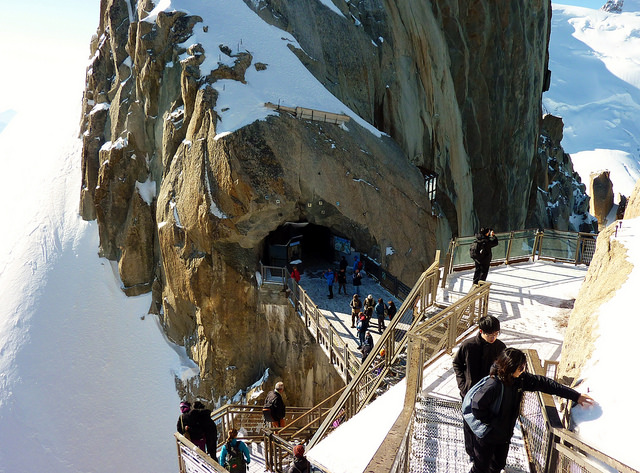
The Aiguille du Midi (3,842m) is a mountain in the Mont Blanc massif in the French Alps. The Aiguille summit contains a panoramic viewing platform, a café and a gift shop. The Vallée Blanche ski run begins here, and the nearby Cosmiques Refuge is the starting point for one of the routes to the Mont Blanc summit. From the Aiguille another cable car (summer months only), the Vallee Blanche Aerial Tramway crosses the Glacier du Géant to Pointe Helbronner (3,462 m) at the Italian side of the Mont Blanc Massif.
2- Arc de Triomphe
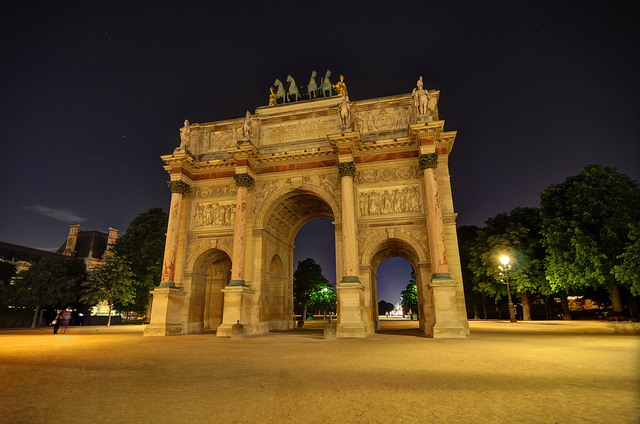
The Arc de Triomphe Paris, the most monumental of all triumphal arches, was built between 1806 and 1836. It stands at the centre of the Place Charles de Gaulle. The triumphal arch is a memorial built in the honor of the French fighters, in particular, those who fought during the Napoleonic Wars. The monument is considered the linchpin of the historic axis. A daily ritual pays tribute to the Great Dead: each evening. There are inscriptions in the ground underneath the vault of the arch which include the Tomb of the unknown soldier from World War I where the Memorial Flame burns and have made the Arc de Triomphe Paris a revered patriotic site.
3- Bordeaux
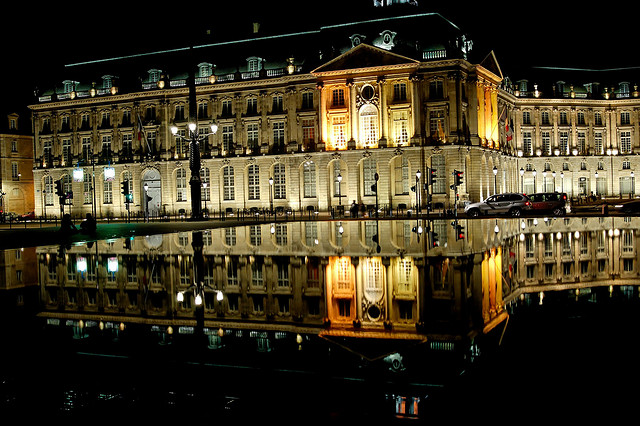
Bordeaux region in France is well-known for having an excellent environment for growing wines. Bordeaux is the world’s major wine industry capital and is home to the world’s main wine fair. Bordeaux is also classified “City of Art and History” and is home to 362 monuments historiques (only Paris has more in France) with some buildings dating back to Roman times. The city also offers several festivals throughout the year.
4- Cannes
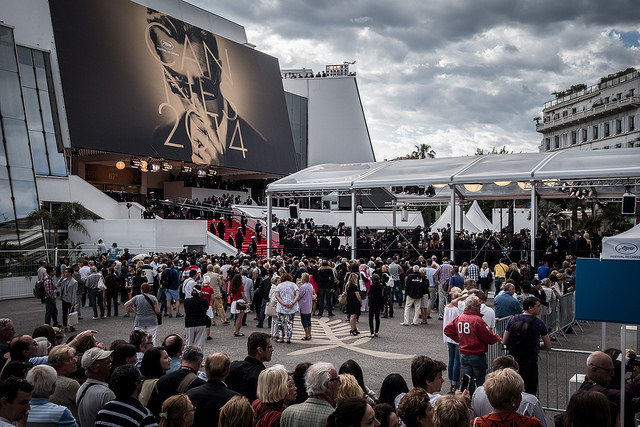
Cannes is a city located on the French Riviera. The city is known for its association with the rich and famous, its luxury hotels and restaurants, and for several conferences. The economic environment is based on tourism, business fairs, trade and aviation. Each year in May, at the time of the Cannes Film Festival, Cannes is the center of the world. It has fantastic beaches and is also offering activities such as sightseeing, sailing, diving, fishing, and sports etc.
5- Carcassonne

Carcassonne is a fortified French town in the Aude department located in the Region of Languedoc-Roussillon. The city is famous for the Cité de Carcassonne, a medieval fortress restored by the theorist and architect Eugène Viollet-le-Duc in 1853 and added to the UNESCO list of World Heritage Sites in 1997. Carcassonne was the starting point for a stage in the 2004 Tour de France and a stage finish in the 2006 Tour de France. Carcassonne is also home to the MKE Performing Arts Academy. Carcassonne receives about three million visitors annually.
6- Catacombs of Paris
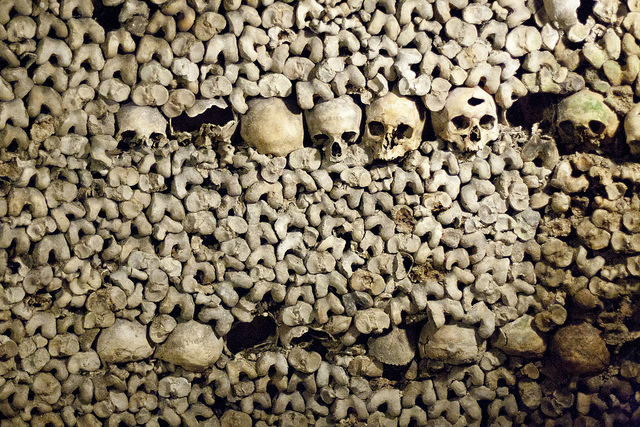
An underground world of the dark and narrow tunnel along with caves having mysterious fascination is also another charm of France. The Catacombs of Paris or Catacombes de Paris are located south of the former city gate in Paris and these ossuaries hold the remains of about six million people. The Catacombs are one of the 14 City of Paris Museums that have been incorporated since January 1, 2013, in the public institution Paris Musées. It is a 200-mile network of old caves, tunnels and quarries filled with the skulls and bones of the dead. It is a powerful draw for a hardcore group of explorers with a thirst for adventure.
7- Chartres Cathedral
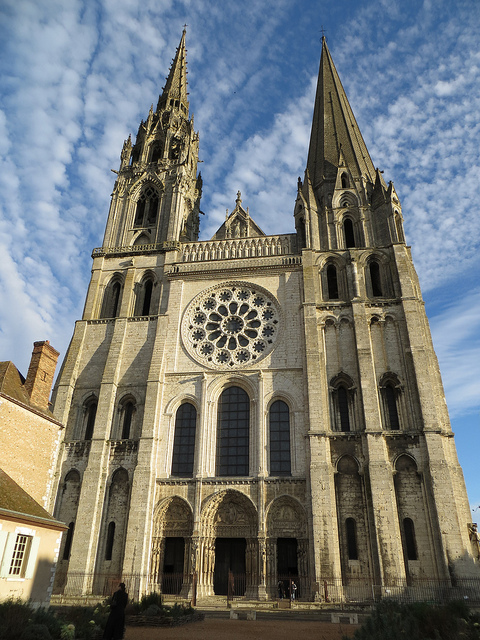
Chartres Cathedral is a medieval Catholic cathedral of the Latin Church located in Chartres, France. The cathedral is in an exceptional state of preservation. The majority of the original stained glass windows survive intact, while the architecture has seen only minor changes since the early 13th century. Chartres Cathedral marks the high point of French Gothic art. The cathedral is still the seat of the Bishop of Chartres. One of the attractions at the Chartres Cathedral is the Chartres Light Celebration, when not only is the cathedral lit, but so are many buildings throughout the town, as a celebration of electrification.
8- Château de Chambord
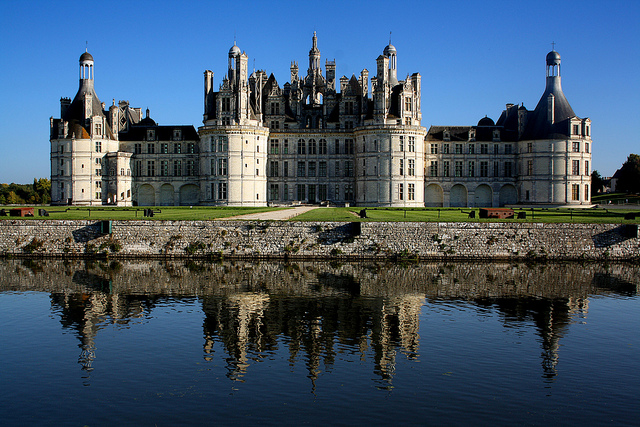
The royal Château de Chambord is one of the most recognizable châteaux in the world because of its very distinctive French Renaissance architecture. It was built to serve as a hunting lodge for Francis I, who maintained his royal residences at the châteaux of Blois and Amboise. In 1792, in the wake of the French Revolution, some of the furnishings were sold and timber removed. During the Second World War, fabulous art works collections were moved to the Château de Chambord and today it is open to the public, receiving hundreds of thousands visitors every year.
9- Château de Chenonceau
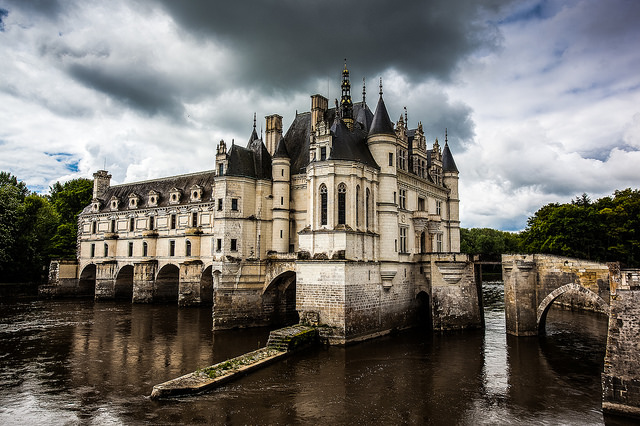
The Château de Chenonceau is spanning in the River Cher in the Loire Valley in France. The current château was built in 1514–1522 on the foundations of an old mill and was later extended to span the river. The bridge over the river was built (1556-1559). An architectural mixture of late Gothic and early Renaissance, Château de Chenonceau and its gardens are open to the public. It is a major tourist destination in France.
10- Disneyland Paris
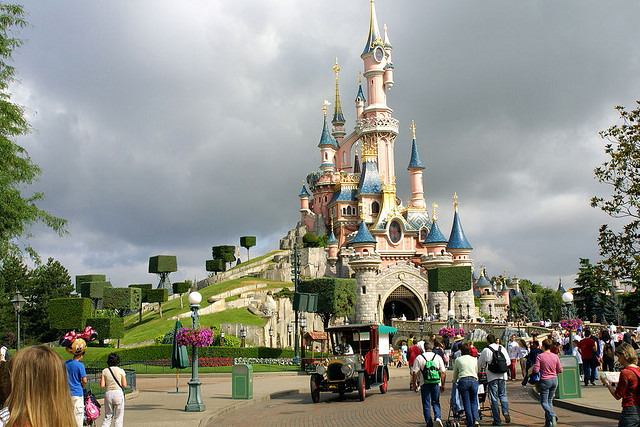
Disneyland Paris, originally Euro Disney Resort, is an entertainment resort located 32 km of Paris and is the most visited theme park in all of France and Europe. The resort is the second Disney Park to open outside the United States, following Tokyo Disney Resort. Disneyland Paris encompasses 4,800 acre and contains 2 theme parks, 7 resort hotels, 6 associated hotels, a golf course, railway station and a new town: Val d’Europe. Significant attractions include: It’s a Small World, Space Mountain: Mission 2, Big Thunder Mountain, Pirates of the Caribbean and Buzz Lightyear Laser Blast. Golf Disneyland features 9-hole and 18-hole courses.
11- Eiffel Tower
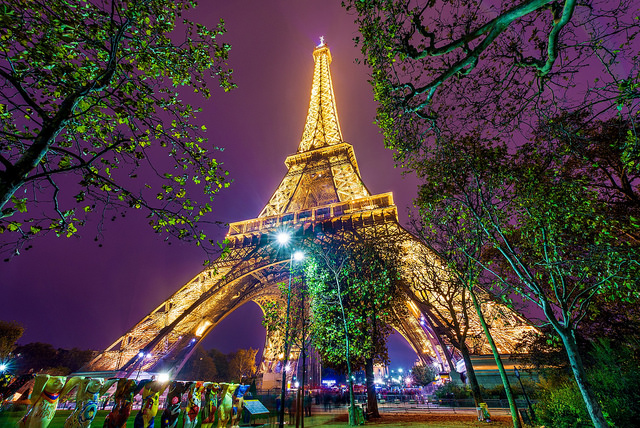
The tallest monument commemorating the centenary of the French Revolution is the Eiffel tower (la Tour Eiffel) of France. The Eiffel Tower is 81 stories, or 1,063 feet tall, and it is the tallest building of Paris, France. It was constructed in 1889 for the Exposition Universalle, an International Exhibition as its unique memento. Eiffel Tower attracts almost 200 million visitors every year. Without any exaggeration it is not false to say that the Eiffel Tower is one of the most distinguished landmarks in the world which even today dominates the skyline of Paris.
For details: Eiffel Tower: The tallest monument of France
12- Île de Ré
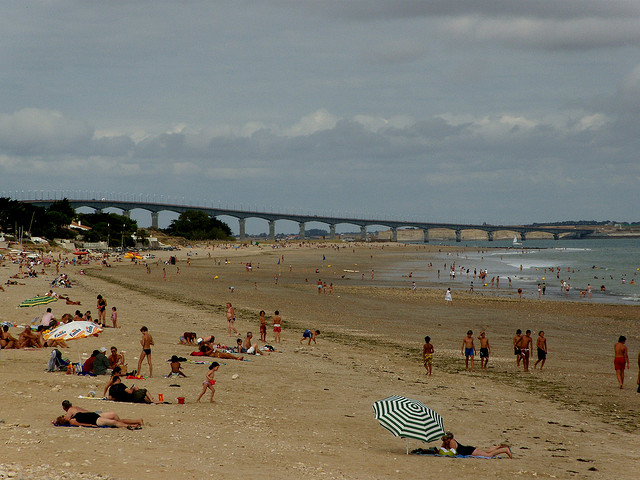
Île de Ré is an island off the west coast of France near La Rochelle, on the northern side of the Pertuis d’Antioche strait. The area is a popular tourist destination. It has approximately the same number of hours of sunshine as the famous southern coast of France. The island is noted to have a constant light breeze, and the water temperature is generally cool. The island is surrounded with gently sloping, sandy beaches, which are a real treat for families and tourists.
13- Louvre Museum
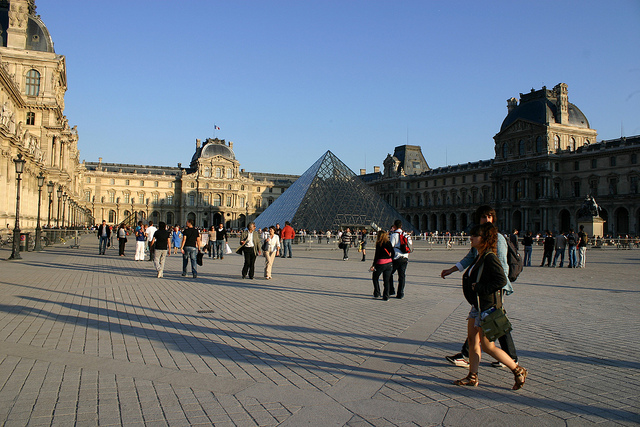
The Louvre or the Louvre Museum is one of the world’s largest museums and a historic monument in Paris, France. The museum is housed in the Louvre Palace, originally built as a fortress in the late 12th century under Philip II. The museum has a collection of over one million works of art, of which about 35,000 are on display, spread out over three wings of the former palace. The museum has a diverse collection ranging from the Antiquity up to the mid-nineteenth century. Some of the most famous works of art in the museum are the Venus of Milo, the Nike of Samothrake, the Dying Slave by Michelangelo and of course Leonardo da Vinci’s Mona Lisa.
14. Lyon

Lyon is considered the famous historical centre in France which was designated a UNESCO World Heritage Site in 1998. The specific regions composing the Historic Site include the Roman district and Fourvière, the Renaissance district (Vieux Lyon), the silk district (slopes of Croix-Rousse), and the Presqu’île, which features architecture from the 12th century to modern times. The Rhône and Saône rivers converge to the south of the historic city centre forming a peninsula or “Presqu’île“. Comparatively less crowded and smaller in area tourists feel absolute fun for its plenty of offerings.
15- Marseille
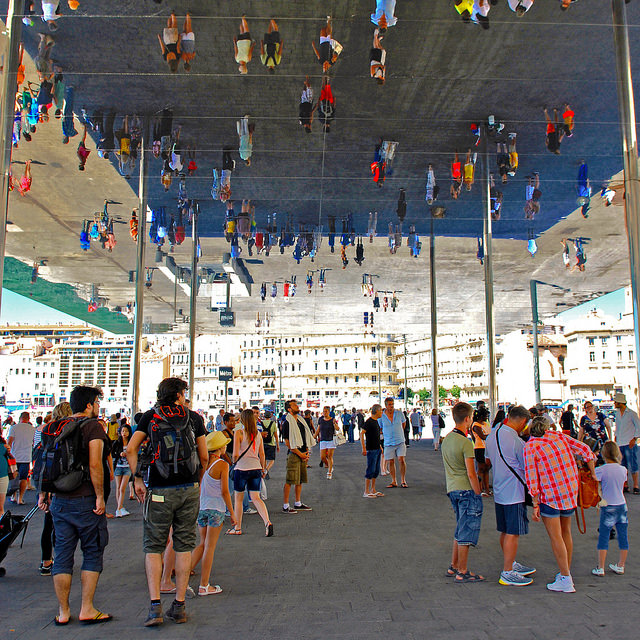
Marseille is an old city in France. Marseille was historically the most important trade center in the region and functioned as the main trade port of the French Empire. Today, it is the second largest city in France. The port is also an important arrival base for millions of people each year, with 2.4 million including 890,100 from cruise ships. With its beaches, history, architecture and culture (24 museums and 42 theatres), Marseille is one of the most visited cities in France. It is a regional centre for culture and entertainment with an important opera house. There are several popular festivals and concerts in its different neighborhoods.
16- Mont Blanc
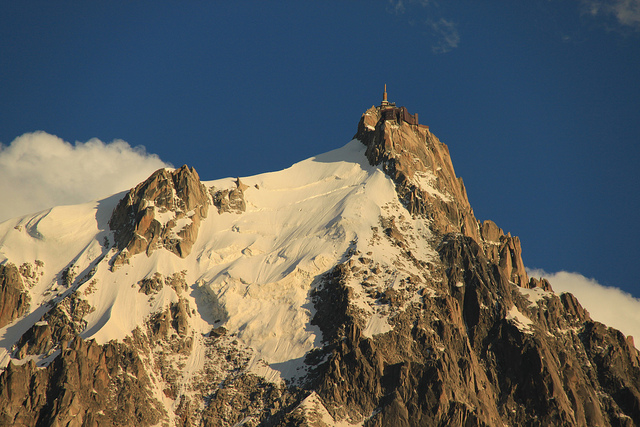
The Mont Blanc massif is being put forward as a potential World Heritage Site because of its uniqueness and its cultural importance. Although it has the highest fatality rate of any mountain in Europe, yet it attracts thousands of mountaineers and hikers for its exotic beauty and stunning thrills. It is also a popular site for skiing and snowboarding. Saint-Gervais-les-Bains and Chamonix in Haute-Savoie are the famous towns near Mont Bland in France. It rises 4,807 m above sea level and is ranked 11th in the world in topographic prominence.
For details: Mont Blanc: The White Queen of the Alps
17- Musée d’Orsay
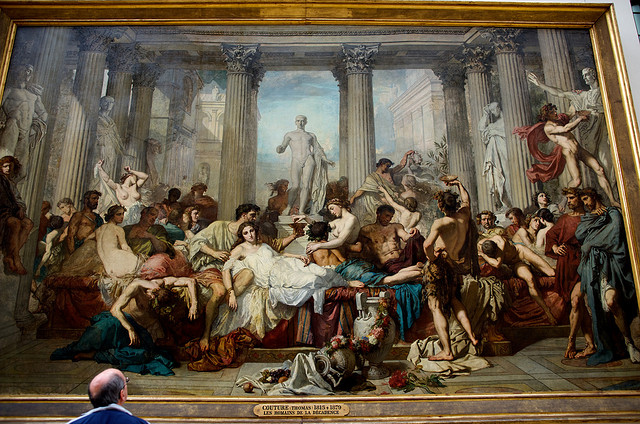
Housed in the train station building, constructed by Victor Laloux for the 1900 World Fair, the Orsay is a national museum devoted to art-works between 1848-1914. It is locally known as the Musée d’Orsay. The various artistic presentations kept in the museum include the themes of Academism, Realism, Impressionism, Symbolism and Art nouveau etc. The museum building was originally a railway station. Its square is also famous for the wonderful sculptures displayed over there.
18- Nîmes
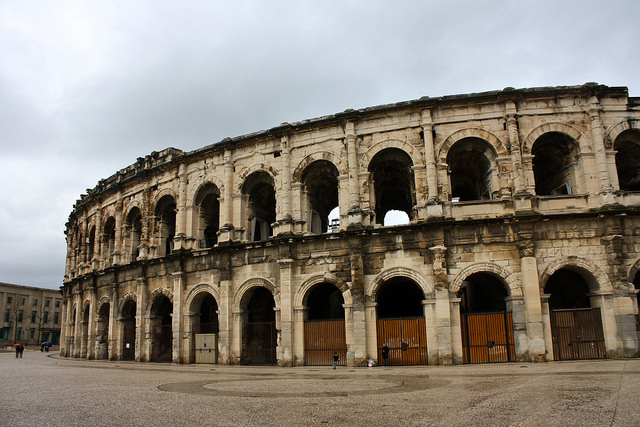
The historic city of Nîmes in France is known for a stunning Roman Coliseum that is second only to Rome. There are a few other fine Roman relics and Diana’s Palace situated in this fantastic city. All The main sights are all within comfortable walking distance of each other. Nîmes has an excellent urban bus system, including a ‘TramBus’. The Arena was renovated in 2006-7, improving visitor access and adding audio-guides. The Maison Carrée in the center of Nîmes was built in 16 BC by Marcus Vipsanius Agrippa, the original patron of Rome’s Pantheon.
19- Notre-Dame de Paris

Notre-Dame de Paris is a historic Catholic cathedral of Paris, France. The cathedral is widely considered to be one of the finest examples of French Gothic architecture and it is among the largest and most well-known church buildings in the world. Notre-Dame de Paris was among the first buildings in the world to use the flying buttress (arched exterior supports). The total surface area is 5,500 square meters (interior surface 4,800 square meters). The cathedral has 10 bells. Many small individually crafted statues were placed around the outside to serve as column supports and water spouts. Among these are the famous gargoyles, designed for water run-off, and chimeras.
20- Père Lachaise Cemetery

Père Lachaise Cemetery is the largest cemetery in the city of Paris. The cemetery is on Boulevard de Ménilmontant. Père Lachaise is still an operating cemetery and accepting new burials. It is the most prestigious and most visited necropolis in Paris which extends 44 hectares and contains 70,000 burial plots. The cemetery is a mix between an English park and a shrine. All funerary art style are represented: Gothic graves, Haussmanian burial chambers, ancient mausoleums, etc. On the green paths, visitors cross the burial places of famous celebrities.
21- Pont du Gard
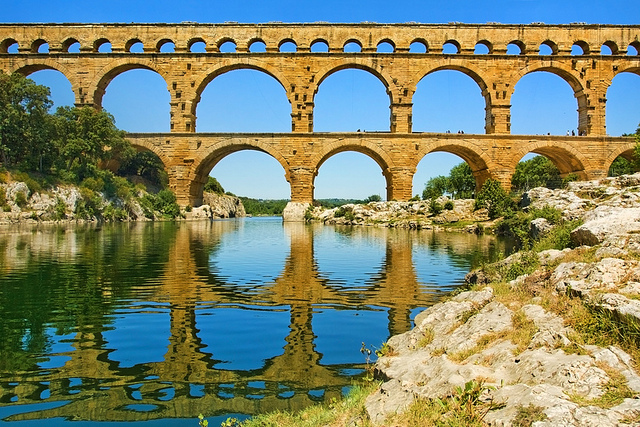
The Pont du Gard is an ancient Roman aqueduct bridge that crosses the Gardon River and is located in the southern France. The Pont du Gard has been a tourist attraction for centuries. The outstanding quality of the bridge’s masonry led to it becoming an obligatory stop for French journeymen masons on their traditional tour around the country. The bridge has had a long association with French monarchs seeking to associate themselves with a symbol of Roman imperial power. The entire area around the bridge was pedestrianised and a new visitor centre was built on the north bank to a design by Jean-Paul Viguier.
22- Promenade des Anglais
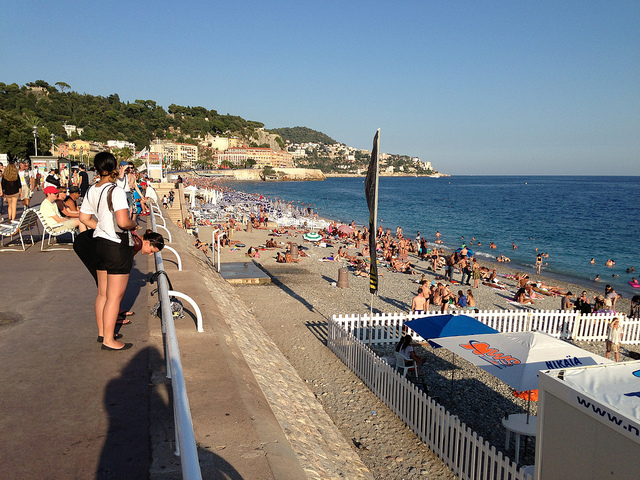
The Promenade des Anglais is a dazzling and cherished promenade along the Mediterranean at Nice, France. The promenade follows the complete 4km sweep of the Baie des Anges with a cycle and skating lane. Aside from numerous events such as the annual Carnival, the Battle of Flowers, etc. that take place along the Promenade, the Promenade has its blue chairs (chaises bleues) and cabanas perfect for a lazy time along the Mediterranean and for contemplation of the azure water of the Bay of Angels (la Baie des Anges).
23- Puy du Fou
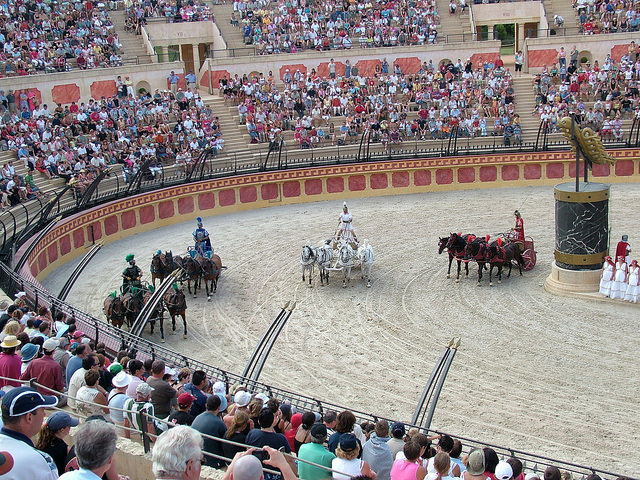
Puy du Fou is a historical theme park located in the heart of the Vendée region of Western France. The park is split into five separate attractions: The Secret of the Lance is set in front of the battlements of a Middle Age Castle. The Vikings is set in a reconstructed 1000 year old fortress that is attacked by a Viking Longship. Triumph’s Sign is set in a replica of an amphitheater that is 115 meters long and 75 meters wide. The Phantom Birds Dance is a show set to a mysterious story and Richelieu’s Musketeers features Musketeers performing swash-buckling sword fighting and Gypsy girls Flamenco dancing in water.
24- Sacré-Cœur Basilica

The Basilica of the Sacred Heart of Paris, commonly known as Sacré-Cœur Basilica is a Roman Catholic church dedicated to the Sacred Heart of Jesus located in Paris. It was designed by Paul Abadie and its construction began in 1875 and was finished in 1914. Sacré-Cœur is built of travertine stone quarried in France. Some 234 spiraling steps lead you to the basilica’s dome, which affords one of Paris’ most spectacular panoramas – up to 30km on a clear day. More than just a basilica, Sacré-Cœur is a veritable experience, from the musicians performing on the steps and the groups of friends picnicking on the hillside park.
25- Saint-Tropez
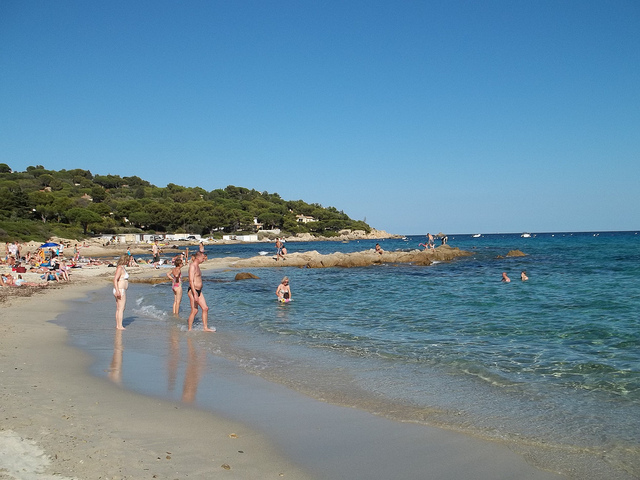
Saint-Tropez is located on the French Riviera. Set on the lovely blue water of the Bay of Saint-Tropez, this modern version of a medieval town is most popular for the line of yachts along the quai, and the facing line of terrace cafés, divided by a parade of strolling tourists and slow cruising expensive cars. Many of the beaches offer windsurfing, sailing and canoeing equipment for rent, while others offer motorized water sports, such as power boats, jet bikes and water skiing, and scuba diving. Some of the private beaches are naturist beaches.
26- Canal Saint-Martin
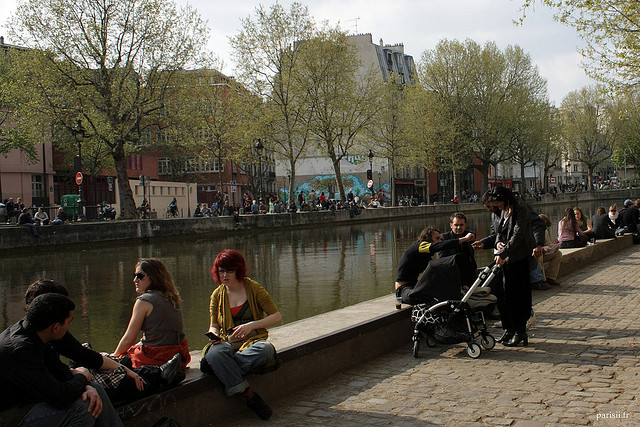
The Canal Saint-Martin is a 4.5 km long canal in Paris. It connects the Canal de l’Ourcq to the river Seine and runs underground between Bastille (Paris Métro) andRépublique (Paris Métro). Along the canal is an unusual hydraulic lifting bridge, the Pont levant de la rue de Crimée. Today, the canal is a popular destination for Parisians and tourists who watch the barges navigate the series of locks and road bridges. There are several popular restaurants and bars along it. The area is popular with students as well.
27- Sainte-Chapelle
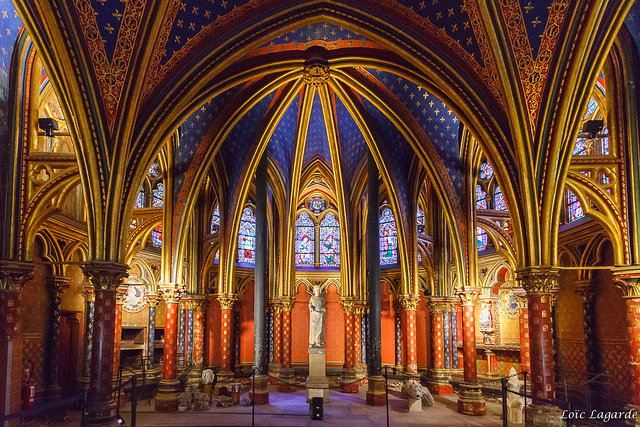
The Sainte-Chapelle is a royal medieval Gothic chapel, located in the heart of Paris, France. It is is one of the earliest surviving buildings of the Capetian royal palace on the Île de la Cité. Although damaged during the French revolution, and restored in the 19th century, it retains one of the most extensive in-situ collections of 13th-century stained glass anywhere in the world. It stands squarely upon a lower chapel, which served as parish church for all the inhabitants of the palace, which was the seat of government.
28- Strasbourg Cathedral
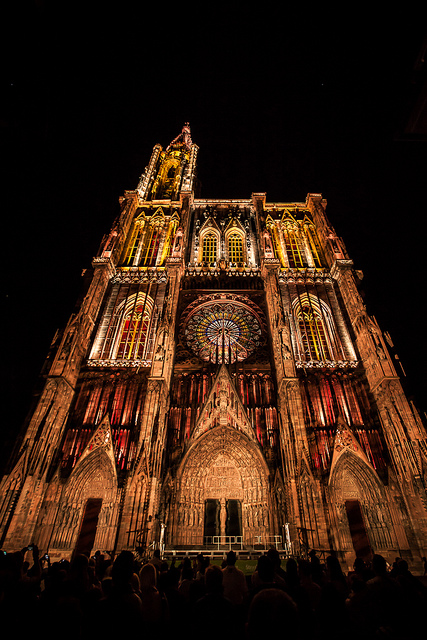
Strasbourg Cathedral is a Roman Catholic cathedral in Strasbourg, France. The Cathedral stands on the exact site of a roman temple built on a little hill above the muddy ground. The cathedral is visible far across the plains of Alsace and can be seen from as far off as the Vosges Mountains or the Black Forest on the other side of the Rhine. Apart from its architectural pattern, the cathedral has many other treasures: stained glass windows dating from the 12th to the 14th century, the St. Pancrace’s altar (1522) from Dangolsheim, the 17th-century tapestries forming the Virgin’s wall covering purchased in the 18th century, and finally a very popular curiosity, the astronomical clock set up in its own 17th-century case decorated etc.
29- Gorges Du Verdon

The Gorges Du Verdon is a river canyon that is often considered to be one of Europe’s most beautiful. It is about 25 kilometres long and up to 700 metres deep. Because of its proximity to the French Riviera, the gorge is very popular with tourists, who can drive around its rim, rent kayaks to travel on the river or hike. The limestone walls, which are several hundreds of metres high, attract many rock climbers. It is considered an outstanding destination for multi-pitch climbing. The river’s striking turquoise colour in Verdon Gorge is associated with glacial sources and the minerals of rock flour suspended in the water.
30- Château de Versailles

The Château de Versailles, which has been on UNESCO’s World Heritage List for 30 years, is one of the most beautiful achievements of 18th-century French art. Commonly known as the Palace of Versailles is a wealthy suburb of Paris, some 20 kilometres southwest of the French capital. Before the revolution, the Versailles complex included the palace, gardens, a walled-in royal hunting ground, a smaller palatial structure and an estate used by Marie Antoinette, Louis XVI’s queen. Today The Fifth Republic has enthusiastically promoted the museum as one of France’s foremost tourist attractions.
Please click the following to see more:
I cannot believe I missed a lot of these places when I went to France a few years ago, I guess I should have read this blog post first. But yes I totally agree with the list here. ^_^
I like most pictures and imformation .